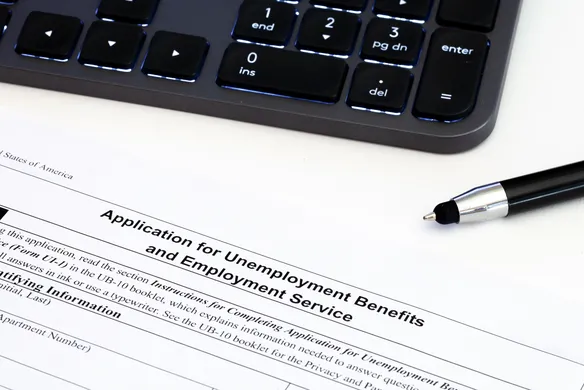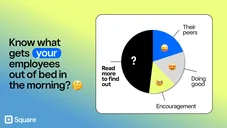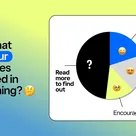This article is for informational purposes only and does not constitute legal, employment, or tax advice. The information contained herein is subject to change and may vary from recent announcements in your region.
For specific advice applicable to your business, please contact a professional.
As an employer, you might have been impacted by COVID-19 lockdowns and travel restrictions. There are government funds, stimulus payments, unemployment benefits, and other expanded benefits that are available to you and your employees, all of which we’ll cover here.
What is unemployment?
According to the Australian Bureau of Statistics (ABS), when an Australian resident is unemployed, that means that they are not employed for one or more hours, are actively seeking out work, and are available for work for a period of time. This differs from someone who is underemployed: They work part-time but are seeking full-time work or have reduced hours. Unemployment rates count all residents who are designated as unemployed.
How are unemployment benefits funded?
Unemployment benefits, which act as unemployment insurance in case workers find themselves out of work, are funded through Australia’s general revenue, which are unallocated funds acquired for any purpose. It could be acquired through income, payroll, or property tax, as well as through taxes on goods and services. Employers are required to pay payroll taxes if they meet the minimum threshold, but these taxes do not directly fund unemployment benefits.
How are unemployment rates calculated?
If you are of working age and are employed or unemployed, you’re part of the labour force. The ABS conducts monthly Labour Force Surveys that ask people aged 15 years and older about their participation in the labour force. The unemployment rate is the percentage of the labour force that is unemployed, but it can be trickier than just calculating a simple percentage. Calculations should also consider the participation rate, which is the proportion of Australians working or actively looking for work as a percentage of the total working population.
As of May 2020, the Australia unemployment rate according to the ABS is 7 percent. But Business Insider reports that this percentage might be drastically underrepresenting those that are underemployed and those that are now not participating in the labour force at all (which means they are not actively looking for work). Regardless, the COVID-19 pandemic has greatly affected not only employees but also businesses.
Am I eligible for unemployment benefits?
Australia has many types of unemployment payments for job seekers, two of which include: the JobSeeker Payment (called Newstart until March 2020) and Youth Allowance for job seekers. Both types of payments are dispersed through Centrelink, a Services Australia program that delivers government payments and services for a range of qualified residents.
You are eligible for the JobSeeker allowance if you’re a resident over the age 21 but younger than pension eligibility age (around the age of 65), under the income limit, and are looking for work or are too sick or injured to work. This JobSeeker allowance also covers those who cannot study due to injury or sickness. Your partnership status, family situation, and amount of income or assets determine the maximum amount of money you’ll receive every two weeks.
You’re eligible for the Youth Allowance for job seekers if you’re a resident between the ages of 16 and 21, either looking for full-time work, studying part time and looking for work, or temporarily unable to work. Your student status, income, rent or lodging fees, and family situation, as well as if you’re considered independent from your parents, all help determine the amount of money you’ll receive.
Check your eligibility and potential allowance for either payment at Centrelink’s payment and service finder.
Keep in mind that you’ll need to pay taxes on all JobSeeker and Youth Allowance payments, either at the end of the financial year or with regular tax deductions from each Centrelink payment.
What if my business has been impacted by COVID-19?
The JobKeeper payment is a wage subsidy program introduced by the Australian government in March 2020 in response to the COVID-19 pandemic. All eligible businesses can apply to receive AU$1,500 per eligible employee, to be paid fortnightly until 27 September 2020. The intention of this subsidy is to help you pay your employees so that you don’t have to lay off or stand down your workforce.
Even if you’re self-employed, you may still be eligible for the JobKeeper payment.
What else do I need to do as an employer?
As an employer, you’re required to follow several government-mandated measures (among others):
- Superannuation for employees: Superannuation (or “super”) is the money paid by employers to their employees to help them save for retirement. The government instituted this required payment to provide people with funds to bolster their pension (which is funded by taxes). The current minimum amount you’ll need to pay your employees is 9.5 percent of their earnings. Check out this superannuation guide to learn more.
- Single touch payroll (STP): As of 2019, all employers are required to report super payments and tax information to the Australian Tax Office through STP. You can use STP-ready online payroll software or you can use a sending service provider to convert your payroll reports. For an easy overview, read this guide on single touch payroll.
- Minimum wage standards: Make you sure you adhere to the current minimum wage for full-time, part-time, or casual employees. For a cheat sheet on how to set pay rates for your employees, reference Square’s guide to minimum wage.
Expanded unemployment benefits due to COVID-19
The government is providing an additional Coronavirus Supplement payment on top of some eligible payments such as the JobSeeker Allowance and Youth Allowance payments for people receiving an eligible income support payment (which come from Centrelink as usual).
There are also two Economic Support payments that the government is offering for eligible pensioners, seniors, carers, and student payment recipients. Find out more about whether you are eligible for the Economic Support Payment, when it will be paid and how you can get it on the Services Australia website.
Read more about jobseeker resources, if you’d like to learn more about extended unemployment benefits during the COVID-19 pandemic.
![]()











